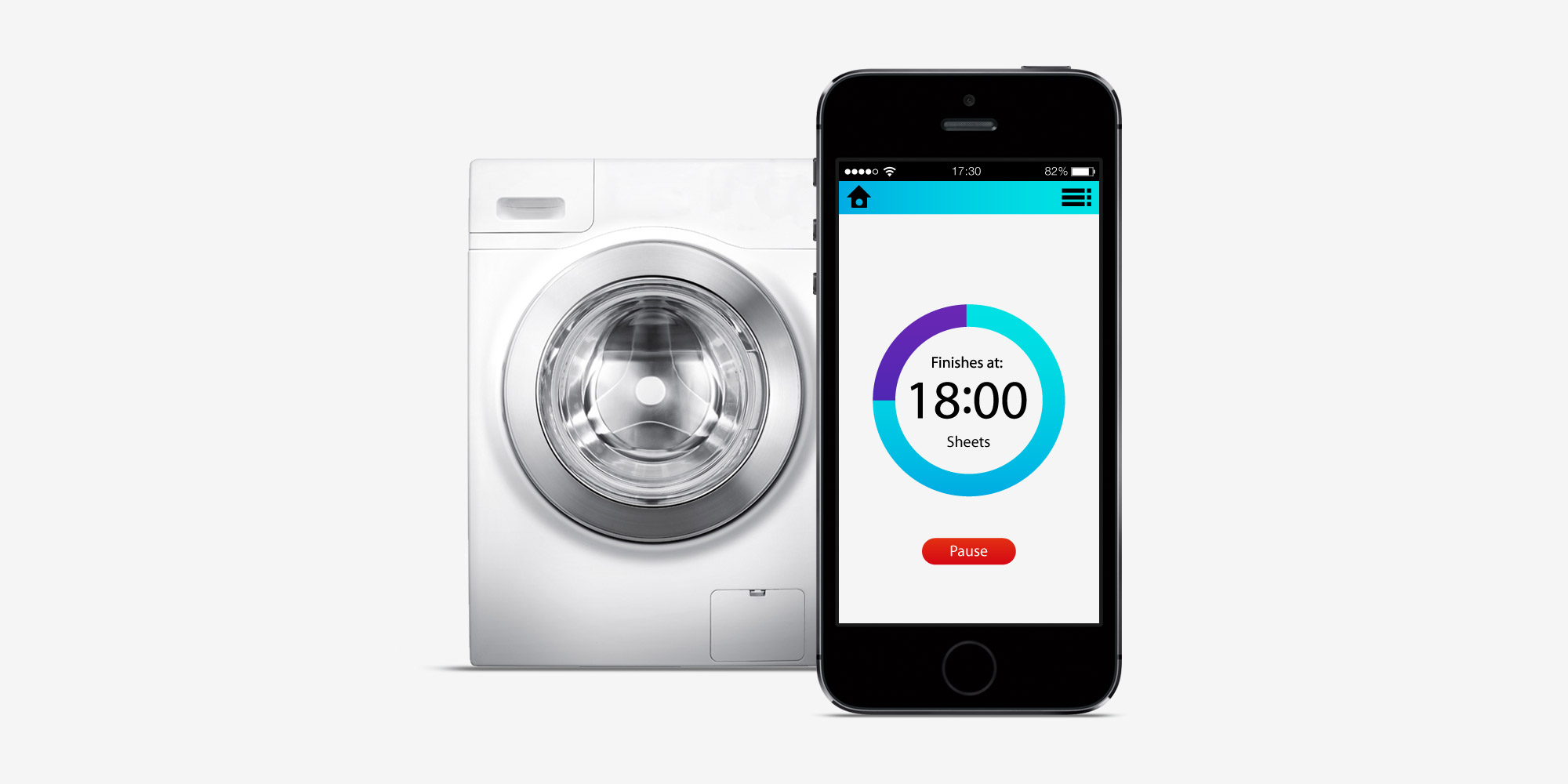
While today's washing machines show you an expected time until it's finished, you still have to plan your day around doing laundry. You start it and then you have to wait until it's done, but you don't know for sure so you need to check on it a couple of times towards the end. And forget about running the eco-friendly mode, then you'd have to do laundry all day.
On top of that they're not very intuative. You got this really nice sweater and the symbols on the washing machine don't match the symbols on the sweater's label.
The washing machine could follow the schedule of the user rather than the user having to schedule their time around the machine itself.
The user experience was more intuitive - simplified for our routinely laundry sessions while assisting us with special cases.

Ever since the introduction of the modern smartphone in 2007 we've looked for ways to make our daily life smarter. Large companies have already tried to make the washing machine smarter by embedding touch-screen displays. Unfortunately, due to the hardware and software restraints users are left with low quality displays and laggy software.
What if washing machines didn't need to have their own integrated user interface? If we abandon this idea that every machine needs its own physical interface and instead move that experience to the smartphone, we no longer have to deal with those limitations.
This makes the user experience fast and fluid as it depends on the smartphone we upgrade every second year rather than the washing machine we keep for much longer.

Imagine coming home after work to a washing machine that just finished. This would mean that you'd no longer have to reserve laundry for the weekends, instead it'd be ready to be hung up or put in the dryer as soon as you came home from work. Since the machine knows exactly how long a regular program runs, it can start the machine just in time for it to be done by the time you come home from work.
This would change the way we do laundry, as it would no longer be reserved for weekends when we have time to wait for the washing machine to finish. Rather than saying when we want the machine to start we tell the machine when we want it to be done. Not only does this improve the user experience but it's also great for the environment - the machine could automatically use eco-modes when it has enough time.